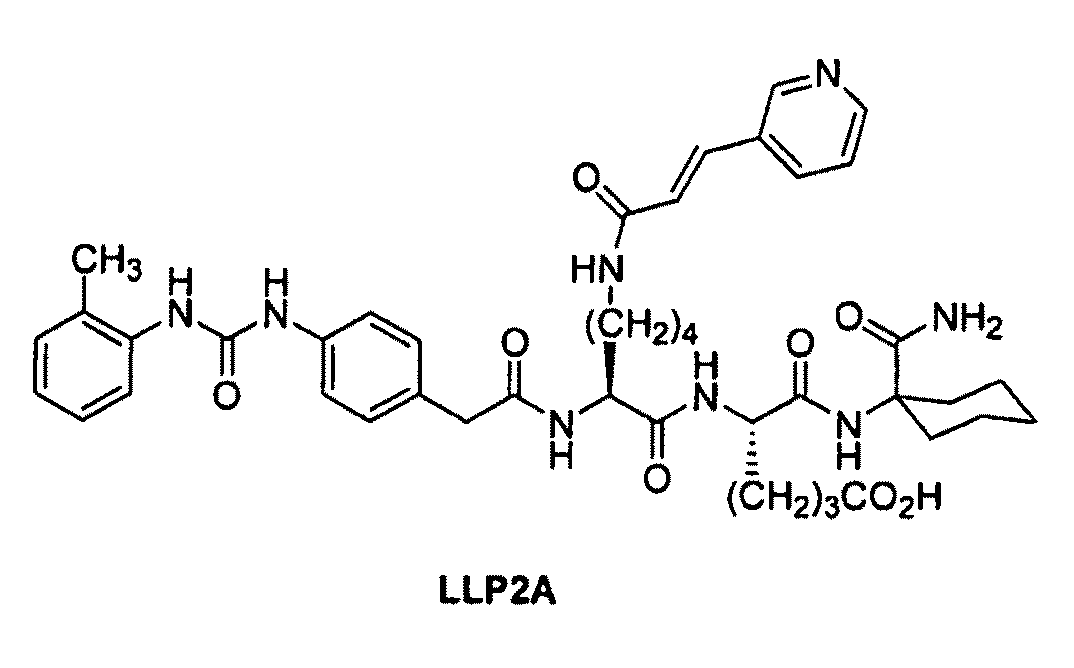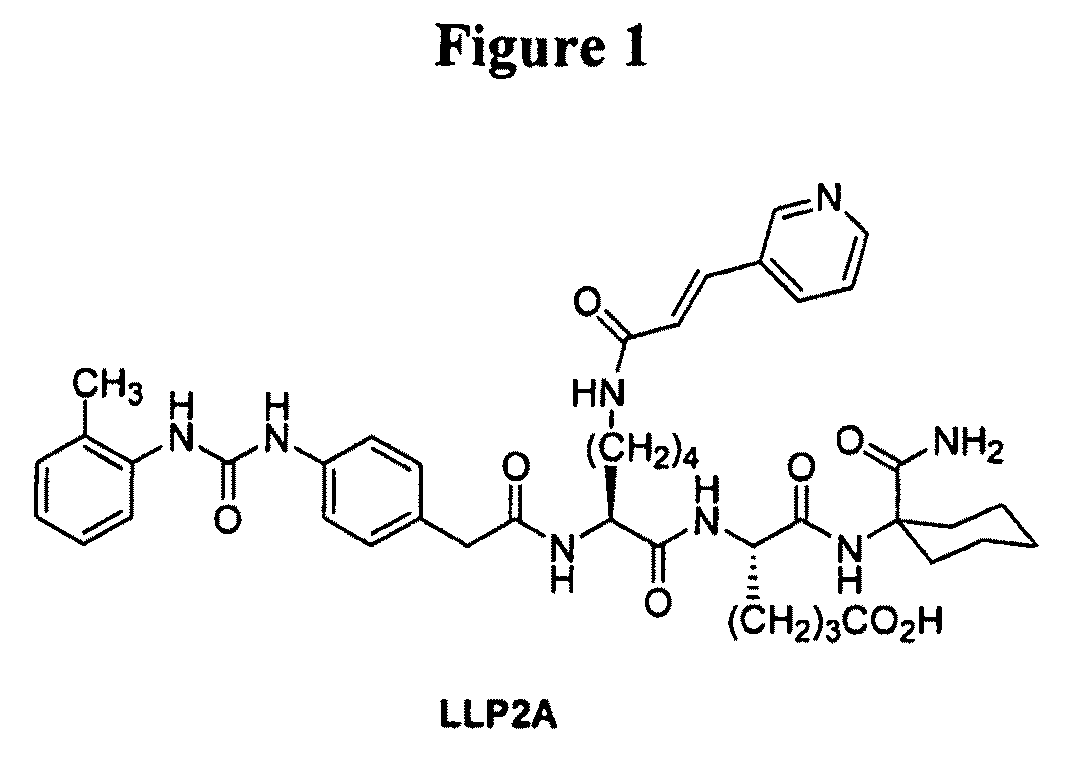Heterocyclic Ligands for Integrin Imaging and Therapy
a ligand and integrin technology, applied in the field of heterocyclic ligands for integrin imaging and therapy, can solve the problems of low relative efficacy/safety ratio, monoclonal antibody-based therapy, and 1 /sub>integrin inhibitors suffer from the significant disadvantage of being susceptible to proteolysis by proteases, and achieve high binding affinity, specificity, and stability
- Summary
- Abstract
- Description
- Claims
- Application Information
AI Technical Summary
Benefits of technology
Problems solved by technology
Method used
Image
Examples
example 1
[0166]This example illustrates the preparation of intermediates, compounds and conjugates as generally provided in Schemes 1 and 2 (see FIGS. 1 and 2). Compound and intermediate numbering corresponds to that found in the noted Schemes.
Intermediates
Aryl Isocyanate Esters
General Procedure for Aryl Isothiocyanate Esters
Ethyl 4-Isothiocyanatobenzoate (2a)
[0167]
[0168]Following a previously reported procedure (see, R. D. Carpenter, et al., J. Comb. Chem. 2006, 8, 907), a solution of an appropriate aniline ester (4.5 g, 27.3 mmol) and triethylamine (60.1 mmol, 8.37 mL) in ethyl acetate (160 mL), was treated with thiophosgene (30.0 mmol, 2.30 mL) in ethyl acetate (130 mL) dropwise over 30 min at 0° C. After addition, the cooling bath was removed and the reaction mixture was allowed to gradually warm up to room temperature over 12 h. The workup consisted of diluting with ethyl acetate, followed by washing sequentially with water (200 mL×2) and brine (200 mL). The organic layer was dried (MgS...
example 2
[0220]This example provides amino acid descriptions for various peptide portions for the compounds and conjugates of the present invention. Peptides with the noted sequences, or using the indicated amino acids can be prepared as outlined above (using solid phase resins) or can be prepared using standard amino acid synthesis protocols. One of skill in the art will appreciate that various functional groups can require protecting groups through the course of synthesis.
TABLE 1The 45 amino acids occurring at positionY4 for those embodiments in which Y is a tetrapeptidehaving the formula −Y1 − Y2 − Y3 − Y4.No.Amino acid1D-Asp2Acpc3D-Asn4D-Ser5D-Gln6D-Thr7HoSer8Gly9D-Glu10HoCit11Hyp12D-His13Aad14D-Ala154-Pal16D-3-Pal17Acdt18Ahch19Akch20D-Tyr21Aib22D-Pro23D-Met24D-Val25Nva26D-Thi27D-Trp28Tyr(Me)29Phg30D-Phe31D-Ile32Ach33Tyr(diBr)34Nle35D-Phe(4-Me)36Tyr(di I)37Aic38Phe(3-Cl)39D-HoPhe40Chg41D-Bpa42D-Nal-243Ana44D-Phe(diCl)45ChaThe D-stereoisomer of natural amino acid is designated by the stan...
example 3
Cell Adhesion Assay Introduction
[0223]α4β1 integrins are cell surface heterodimeric glycoproteins that mediate cell adhesion to vascular cell adhesion molecule-1 (VCAM-1 or CD 106) as well as to extracellular matrix (ECM) protein fibronectin (FN). Integrin expression and function depend on cell activation. The dynamic changes in integrin affinity, avidity, or activation state are implicated in cell migration, survival and apoptosis, cancer development and metastasis. Binding affinities (IC50s) of the ligands were studied in a Molt4 T-cell leukemia adhesion assay by inhibiting the α4β1-mediated cell adhesion to CS-1 peptide (DELPQLVTLPHPNLHGPEILDVPST), which is the binding motif of fibronectin to α4β1 receptor.
General Procedure for Cell Adhesion Assay
[0224]96-well plates were prepared by coating them with 5 μg / mL neutravidin for a one-hour period, followed by adding 2 J μM biotin-conjugated CS-1 peptide. The wells were then blocked with 1% bovine serine albumin in phosphate buffer sa...
PUM
| Property | Measurement | Unit |
|---|---|---|
| stereoisomer | aaaaa | aaaaa |
| structure | aaaaa | aaaaa |
| hydrophobic | aaaaa | aaaaa |
Abstract
Description
Claims
Application Information
 Login to View More
Login to View More - R&D
- Intellectual Property
- Life Sciences
- Materials
- Tech Scout
- Unparalleled Data Quality
- Higher Quality Content
- 60% Fewer Hallucinations
Browse by: Latest US Patents, China's latest patents, Technical Efficacy Thesaurus, Application Domain, Technology Topic, Popular Technical Reports.
© 2025 PatSnap. All rights reserved.Legal|Privacy policy|Modern Slavery Act Transparency Statement|Sitemap|About US| Contact US: help@patsnap.com



